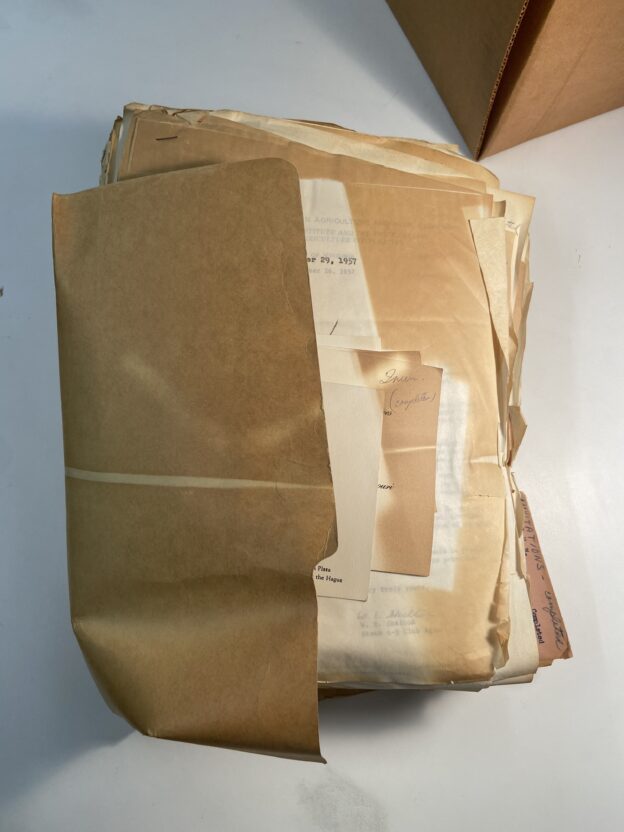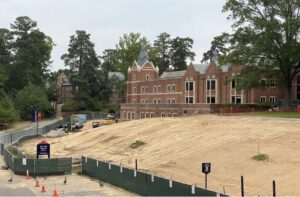When I tell people my job title, Processing & Reference Archivist, there is always a little pause as they try to figure out what that means. I usually quickly follow up with, “What does that mean?” and give a quick explanation of Reference Archivist and Processing Archivist. The Reference part most people get; it’s the Processing part that most people don’t.
Processing a collection basically means making it usable and discoverable by researchers. There are a variety of actions a collection may or may not require, depending on what state it’s in when we acquire it. One of the basic preservation tasks I undertake is called re-housing. I remove documents from their original folder and place them in a new, archival folder. I transcribe any original information recorded on the old folder onto the new folder, in addition to any information required to identify the folder in our collection.
So, yes, I get paid to move papers from one folder to another. The photo I’ve included helps illustrate why I do that. This badly over-stuffed folder had been sitting in its records carton for about 60 years. It was the first folder in line so had been pressed up against the inside of the box. The “tan lines” on the visible pages demonstrate why archival folders and boxes are different from regular everyday folders and boxes. The folder had protected part of the pages from the surface of the box. Archival folders and boxes are engineered to be free of the acids and lignins that naturally occur in most paper products. You can also see where a rubber band had valiantly tried to hold it together before degrading. Pro tip: do not use a rubber band to hold your documents together. If the rubber band doesn’t tear the edges of the papers, it will inevitably degrade and either stick to whatever surface it’s touching, or come apart just as you’re removing the folder from the box, thereby spilling the papers onto the table, the floor and just all over the place.
I re-housed this beast into five archival folders. As part of that work, I smoothed out any wrinkles and creases, unfolded folded-up documents, removed paperclips (they rust and tear paper), and placed barriers between newspaper or telegrams and adjoining documents. Newspaper, telegrams and similar materials were not intended to last long. They’re cheap, mass-produced materials which quickly degrade and will stain, and weaken, whatever papers they’re filed against because they are not, you guessed it, acid-free or lignin-free.
If you have newspaper clippings stored somewhere at home, don’t expect them to last forever unless you put in a little preservation effort. If it’s just the information you want to keep, consider making a photocopy or digital scan. If the clipping or newspaper itself has intrinsic value, there are polypropylene sleeves of various sizes available from reputable archival supply companies. It’s best to store the newspaper as flat and unfolded as possible. The paper becomes brittle as it degrades, so if you have a clipping folded up in an envelope, be prepared for that envelope to eventually contain newspaper confetti.
If I didn’t take any of these actions, the researchers would be left digging through all the boxes (and for this collection, that’s around 300 records cartons). More likely, I would be the one doing the digging. But taking these actions means I can quickly provide the researcher the information they are looking for. Being a Processing Archivist makes my job as a Reference Archivist much easier.


